A daisy flower is one of the most common flowers you can have in your garden.
Daisies are low-maintenance perennials that make for beautiful cut flowers.
Moreover, these are bright, cheerful, and easy-to-grow flowers that are readily identifiable and are a mainstay of cottage gardens and classic perennial borders alike.
However, the term daisy tends to be far broader than you think it is.
There are a number of options when it comes to choosing daises to grow in your garden.
The common name ‘daisy plant’ is applied to a large number of species within the huge Asteraceae family of plants.
It is a group popular for blooms that are flat and disc-shaped, with petals that form rays projecting outward from a central hub.
Keep on reading.
Daisy Plant
The daisy plant or Bellis perennis includes a few species of flowering plants within the Asteraceae family.
These are native to Europe, Africa, and North America.
The word daisy comes from the old English word dæges-eage, meaning “day’s eye.
This is because the flowers tend to open at dawn.
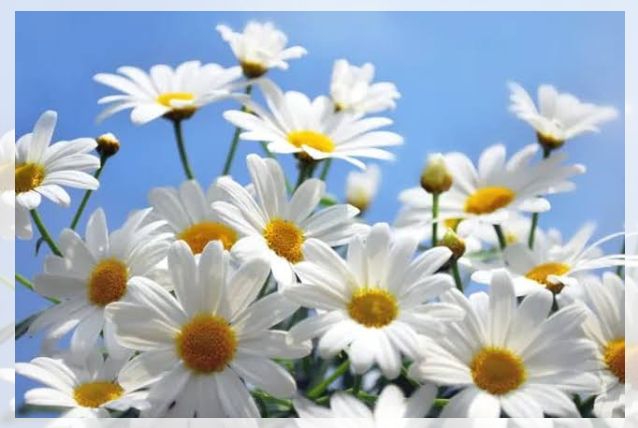
Moreover, the family also includes chrysanthemums, zinnias, asters, and sunflowers as well as a number of common weeds like dandelions.
However, the daisy species that are best for your flower garden depends on a number of factors.
A daisy plant that is perfect for one growing zone may not be a total pest in another.
The following are the gorgeous species of daises to consider for your garden:
English Daisy, Bellis Perennis
The common English Daisy plant is somewhat reputable for being a weed.
Moreover, some gardeners even consider it invasive in some areas.
The species tends to have flowers with white rays and yellow centers, however, there are a number of cultivars with semi-double and button flowers.
These include ‘Galaxy Red’.
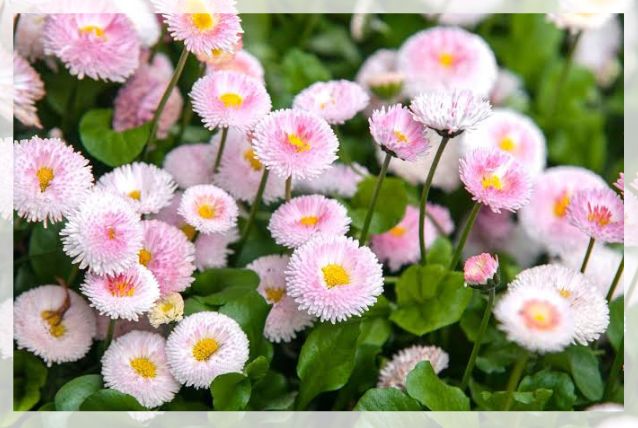
It is important to note that these cultivars are both showy and better-behaved than the primary species.
English daisies are hardy in growing zones 4 to 8, however, you can also grow them as biennials in warmer zones and as annuals in cooler zones.
These low-growing daises, especially the showier cultivars can make excellent ground cover plants.
These are native to Northern Africa, western Asia, and Europe, grows up to 3 to 6 inches, and will need full, dappled shade for growth.
Gerbera Daisy, Gerbera Jamesonii
The National Garden Bureau names 2013 the year of Gerbera, declaring their pleasing shape and luminous color to be irresistible to many gardeners.
Unline some daisies, this South African native is a tender perennial, which is hardy in warm climates only.
However, this plant can thrive in a container garden and make stunning cut flowers as many florists and brides can attest.
Moreover, also known as African daisies, or Veldt Daisies, these thrive best in the morning sun, though they can also tolerate full sun in cooler climates.

Make sure to water the plants at the soil level to keep water off the foliage and prevent fungal diseases.
YOu can look for the Festival series in a rainbow of colors or try one of the lush, semi, double types, like the peach-hued Cartwheel Chardonnay.
These grow in USDA zones 8 to 10, can grow up to 12 to 18 inches, and will need full sun for growth.
Marguerite Dasiy, Argyranthemum frutescens
The Marguerite daisy plant is also popular as cobbity daisy.
Their blazing yellow and pink color makes a number of gardeners thrilled, as well as its demure white petal variety.
This tends to thrive as a perennial in zones 10 to 11.
However, in any other zone, you will grow them as annuals in the warmest zones.
So they will not return after winter, but you will get a full season of repeating blooms.
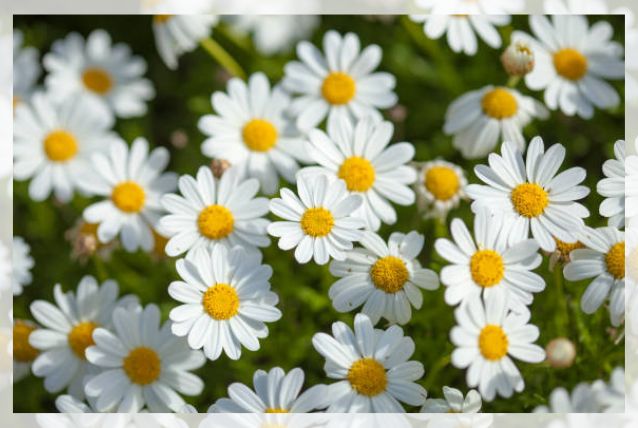
Moreover, marguerite daisies are at their best during spring and fall when the temperature at nighttime is below 75 degrees.
However, if you tend to shear them back in the summer, they will return with a new flush of blooms when the autumn rain arrives.
These daisies are native to Canary Island, can grow 2 to 3 feet tall, and will need full sun to thrive.
Oxeye Dasiy, Leucanthemum vulgare
What gardeners consider a vigorous plant in one garden is a weed in another and that is true for the Oxeye daisy.
It is a native flower in Europe, where the spreading nature and drought resistance of this plant makes them pasture pests.
These are short-lived perennials that many gardeners consider invasive.
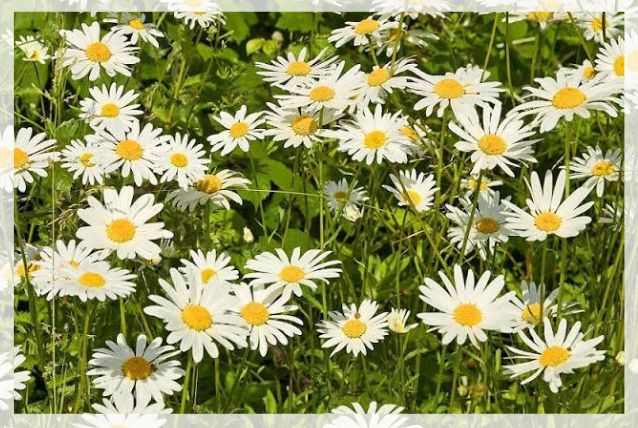
However, in tamer settings, these species of daisies are welcome for their three-month bloom time.
You can use them in a small, well-kept wildflower garden, or allow them to naturalize in your cottage garden.
These can grow in USDA growing zones 3 to 8, tends to grow about 1 to 3 feet tall, and will thrive in full sun exposure.
Learn more about Drought-Tolerant Plants that will survive in the Driest Conditions here.
Painted Daisy, Tanacetum coccineum
What makes them take a spot in every cutting garden is their ease of care and vivid blooms.
It tends to start blooming in early summer and may also put on a second, smaller show in the fall if you deadhead the faded blooms.
After the fernlike leaves appear during the spring, you will need to watch out for aphids and leafminer.

Moreover, certain varieties like ‘James Kelway’ are easy to begin from seeds or you can try the pale pink variety ‘Eileen May Robinson’.
These are native to Eastern Europe, Irna, and Central Asia, grow in USDA zones 3 to 7, are about 2 to 3 feet tall and will need full to partial sun for growth.
Shasta Dasiy, Leucanthemum x superbum
This one is a cross of the oxeye daisy plat and three other wild daisies yielded the beloved Shasta daisy.
These receive their common name from the white snow of Mount Shasta in California.
A number of cultivars of this species offer you a number of different looks for your flower borders, ranging from yellow ‘Banana cream’ to the frilly ‘Phyllis Smith’.
Moreover, the ‘Backy’ and ‘Alsaka’ are widely sold and look like classic daisy flowers you can find in cottage gardens.
These plants tend to bloom across a long season but they reach their peak in June and July.
Though they are low maintenance, Shasta Daisies will not thrive on wet feet and in some cases, fail to reappear in the garden after a soggy winter.
You will need to divide the plants every two years to keep them vigorous.
These are nursery hybrids, while their parent species are native to Europe, and Japan.
Furthermore, the USDA growing zones are 4 to 9, grow to about 1 to 4 feet tall, and will need full sun exposure.
Swan River Dasiy, Brachyscome iberidifolia
These are warm-weather perennials from Australia, that produce small flowers. about 1 inch in diameter.
However, their blooms are so colorful and abundant and the flowers work well with other garden plants.
It can also serve as a central feature of any flower garden.
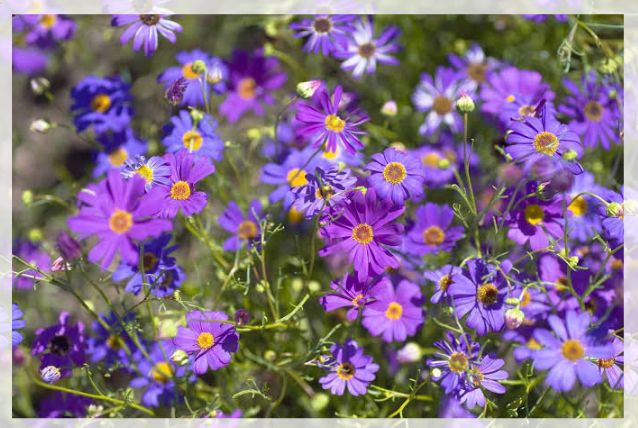
Its blooms appear in lavender, blue, yellow, or white in abundance from summer to fall, while its foliage is of textured grey-green due.
You can grow this plant as annuals in zones 2 to 8, while as perennials in 9 to 11.
Moreover, it grows to q to 1.5 feet tall and will need full sun exposure to grow.
Growing a Daisy Flower from Seed
If you want to grow a daisy flower from the seeds, the flowers will bloom the following year as well.
You can plant the famous Shasta daisy flower from seeds by following the steps below:
Sow the seeds of the daisy in the spring, you can choose to sow them outside when the soil temperature is about 70 degrees Fahrenheit.
Plant the seeds in a sunny location, this is because the seeds will need light to germinate and the flowers thrive best in full sun.
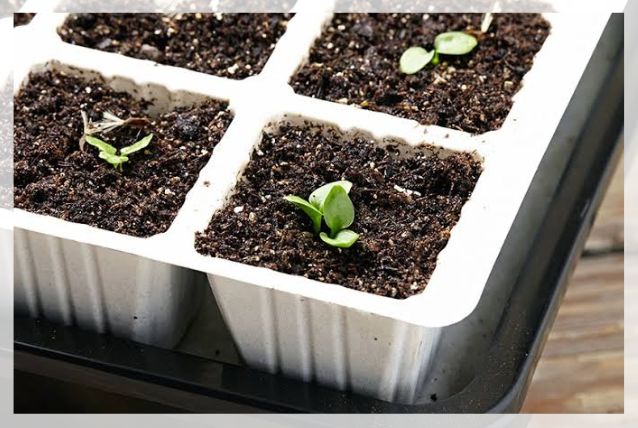
Moreover, you can also freely sow the seeds of the daisy plant.
Make sure to cover the seeds that you sow with an eighth of an inch of soil so that the sunlight can reach the seeds.
Plant the seeds in nutrient-rich, well-draining soil.
You can use a mix of sand, peat moss, and manure compost soil for your plants.
Lastly, keep the soil moist.
It is important to keep the soil moist and the seeds will germinate in 10 to 20 days.
Growing Daisies from Root Balls
In case you want flowers the same year you plant a daisy flower, you can buy the ones that are already grown and transplant them from the container to the garden in early spring.
Follow the steps below:
Plant them in Nutirent-rich Soil: If the garden soil needs more nutrients, you can apply an all-purpose fertilizer to help your plants grow.
Moreover, you can also add a layer of mulch to preserve moisture.
Make Space for your Dasiy plants: Dig a hole that is about twice the diameter of the pot of the daisy plant, then place the plant in the hole so that the root ball is flush with the surface of the soil.
Space the Dasiy plants one to two feet apart: As this plant is a fast-grower, you will need to make sure to give the root balls enough room to expand in your garden.
Water the Plants at the Base: Make sure to water your plant at least once a week.
Moreover, a daisy flower does not grow well in soggy soil. so make sure that the soil is well-drained before watering again.
Caring for Daisy Flower
One of the important things to note about a daisy flower is that they are easy to care for. Make sure to follow the steps below to keep your flowers strong:
Support your Plant with Stakes: Some types of daisies tend to grow tall and may even fall over after heavy winds.
Thus, make sure to keep an eye on your plants and provide the with support or stake them when necessary.
Deadhead the Blooms to promote Growth: Daisies tend to bloom a number of times in a season.
When you deadhead the flower heads as soon as they begin to fade, you can encourage new blooms to form as many as three times in a season.
Moreover, when the plant has done blooming, you can cut back the stems all the way to the leaves and the plant will rebloom the following year.
Propagate the Daises by Dividing: It is important to note that this plant tends to self-seed and proliferate.
This means that the bushes will grow bigger year after year.
In a year or two after the initial bloom, the plant may get so large that its roots will overcrows each other. This can lead to the withering of a certain part of the plant.
Therefore, at this point, you will need to dig up the entire bush and cut away the dead parts of the plants.
Divide the remaining plant and its roots.
Then plant the separated sections 10 to 12 inches away from each other.
You can choose to divide as often as necessary. If you do this, you will have healthy daisy bushes for years to come.






Leave a Reply